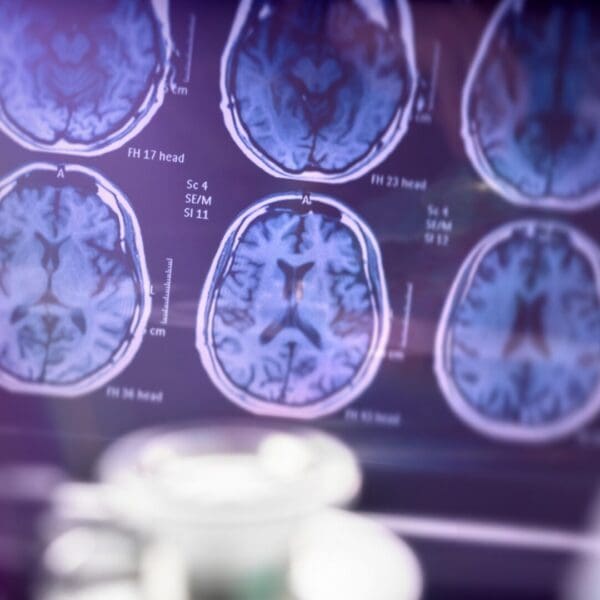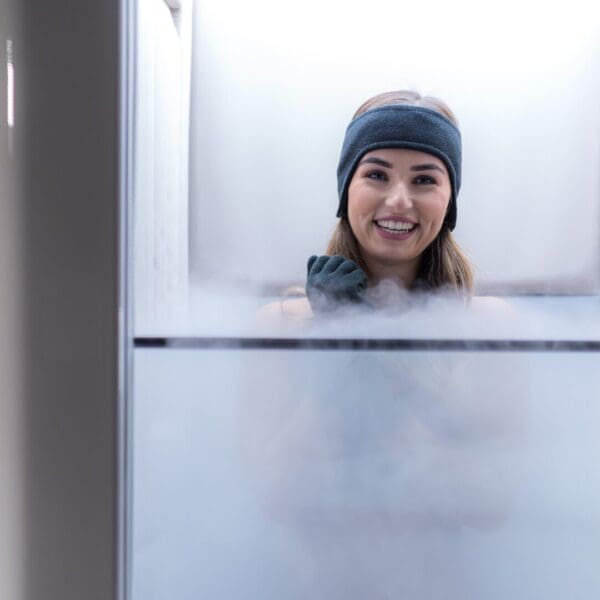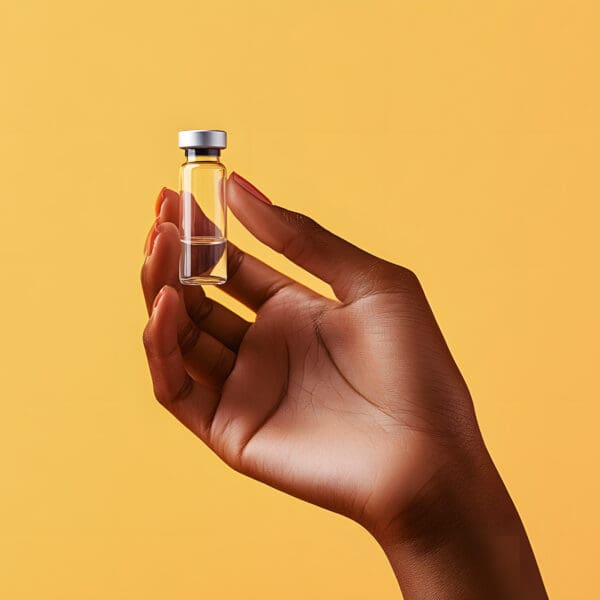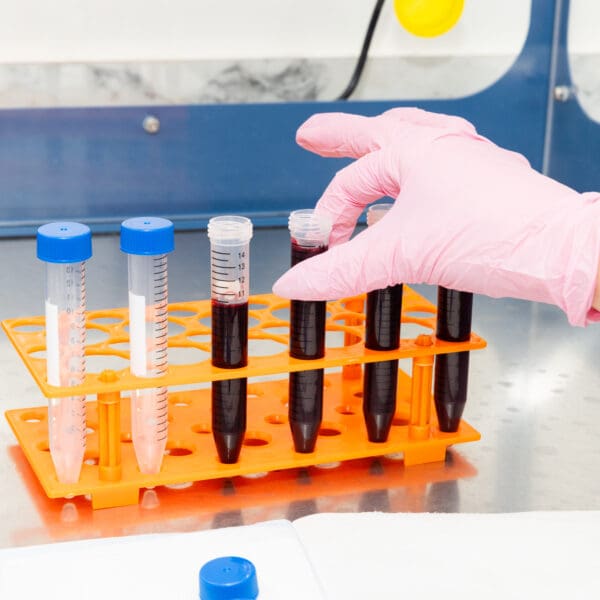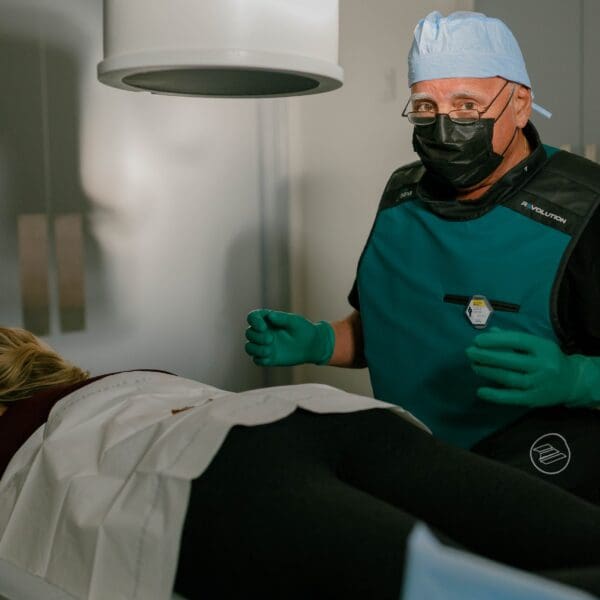What if your own fat held the key to healing your joints, supporting your immune system, and extending your healthspan? That’s not just science fiction, it’s the foundation of what American Cell Technology (ACT) is doing right now.
We sat down with Kevin Ferber, the Chief Operating Officer of ACT, to talk about the real-world application of stem cells, the importance of using your own DNA for treatment, and why this field of medicine is just getting started.
Why Your Own Cells Matter
American Cell Technology is the largest personal stem cell bank in the US. The keyword is personal. ACT focuses exclusively on autologous stem cells (cells taken from your own body and banked for future regenerative use).
“When it’s your own DNA, there are no immunological concerns, no rejection risk. Your body recognizes your cells and knows what to do with them,” Kevin explained.
Instead of relying on donor tissue or overseas treatments of questionable origin, ACT empowers patients and practitioners across the US with a safe, highly controlled, FDA-registered process for isolating, expanding, and cryopreserving live mesenchymal stem cells.
From Mini-Lipo to Major Potential
Here’s how it works: a physician performs a simple, local anesthesia mini liposuction. The adipose tissue (fat) is sent priority overnight to ACT’s lab, where the real magic begins. Skilled lab techs isolate the mesenchymal cells and grow them naturally in a controlled, sterile environment, never overcultured or overstressed.
“It’s not just about pulling out fat and freezing it. Our team ensures optimal viability by growing the cells to 80 or 90 percent confluence, which protects their integrity,” said Kevin.
Once ready, the cells are frozen in liquid nitrogen and stored for decades. Each vial contains ten million live, potent stem cells. Patients can use them for targeted orthopedic treatment, systemic infusions, or even as an emergency repair tool down the road.
Why Timing & Quality Count
According to ACT and its network of physicians, banking your cells when you’re younger and healthier gives you a powerful edge.
“Everyone’s cells age differently, but younger cells tend to replicate better. We’ve seen leaner, more active patients produce higher quality cells, even from smaller fat samples,” Kevin said.
He added that storing now is like an insurance policy for your future body. Injuries, surgeries, aging, and illness don’t wait. Having your best cells on standby means you’re ready when the time comes.
Beyond Joints: The Full-Body Benefits
ACT works with a wide range of practitioners, from orthopedic surgeons to neurologists who use autologous cells for far more than just joint pain. Patients are now exploring regenerative options for conditions like autoimmune diseases, long-COVID, neurological decline, and systemic inflammation.
Kevin recalled one case: “We had a patient with long-term lung issues post-COVID. After receiving their own banked cells intravenously, their breathing improved significantly the next day.”
Other doctors in ACT’s network have used stem cells to support sexual wellness, aesthetics like hair regrowth, and even hormone balance.
The Stem Cell Misconception
One of the biggest issues in the field? Misunderstanding.
“People throw around the term ‘stem cells’ for everything, from PRP to amniotic fluid. But unless you’re talking about your own live mesenchymal stem cells, you’re likely not getting what you think,” Kevin warned.
He emphasized that allogeneic products (cells from donors) often contain no viable cells at all and carry risks of immune response or latent virus exposure. Worse, many offshore clinics don’t disclose live cell count or offer post-treatment support.
“There’s a reason ACT doesn’t use donor cells. It’s about safety, consistency, and actual outcomes.”
The Science of Cell Longevity
Dr. Joseph Purita, medical director at PUR-FORM and a practitioner who partners with ACT, joined the conversation to explain the science behind stem cells and aging. His take? Stem cells are powerful not because they become other cells, but because they send instructions, via mitochondria and exosomes, that help your body heal itself.
“They modulate inflammation, repair tissue, and replace defective mitochondria. And the healthier your mitochondria, the healthier your whole system,” Dr. Purita said.
That’s why ACT is obsessed with quality control: every sample is tested for contamination, cell viability, and proper growth. Anything less gets discarded.
Optimizing Your Stem Cells: Why Your Lifestyle Matters
One of the lesser-known facts about stem cell therapy is that your lifestyle can directly affect the quality of your cells. The good news? There are real, actionable steps you can take to improve them before you bank or use them.
According to Dr. Purita, inflammation is the enemy of cellular health. Chronic inflammation, often caused by environmental toxins, stress, poor diet, and alcohol, can compromise the vitality of your cells.
He recommends a few simple, high-impact strategies:
- Detox Your Body Regularly: Dr. Purita suggests modalities like EBO2 (Extracorporeal Blood Oxygenation & Ozonation), which filters the blood and helps remove toxins that disrupt cellular function.
- Avoid Alcohol: Even moderate alcohol intake can impair bone marrow function and cellular energy production. For best results, avoid alcohol leading up to both banking and treatment.
- Support Your Mitochondria: Compounds like NAD+ and CoQ10 can help recharge your cells’ energy systems, which is especially critical before undergoing regenerative treatment.
- Live Anti-Inflammatory: Prioritize sleep, whole foods, and nervous system regulation to lower baseline inflammation levels.
Kevin added that while two weeks of clean living is better than nothing, optimal results come from long-term consistency. “This isn’t an overnight fix,” he said. “You can’t out-supplement decades of stress or toxin exposure. But the body can recover with time, and your cells will reflect that.”
Why This Isn’t a Trend, It’s a Movement
Despite strict advertising limitations in the US, ACT has quietly built a network of leading-edge physicians and tens of thousands of clients. And they’re just getting started.
Kevin’s vision? A world where stem cell banking is as common as saving for retirement. “This is about long-term health. We’re not treating symptoms, we’re preserving options,” he said.
Dr. Purita added, “My job is to buy my patients five to ten more years. And with the way technology is evolving, that time could make all the difference.”
The Takeaway: How Stem Cell Banking Can Protect Your Future
Stem cell therapy is not about chasing trends or experimental shortcuts. It’s about preparing for what your body might need five, ten, or even twenty years from now, with the most powerful tool it already has: its own cells.
By banking your mesenchymal stem cells when you’re healthy, you’re building a reserve of regenerative potential that can be used to target joint damage, calm inflammation, support recovery from illness, or simply slow down the wear and tear of aging.
What ACT offers isn’t magic. It’s science, structure, and safety wrapped in one of the most advanced regenerative platforms available in the US today.
Whether you’re optimizing for longevity, looking for real alternatives to invasive surgery, or simply want more control over how you age, stem cell banking gives you something most health interventions can’t: the ability to act now, so your future self has better options later.

